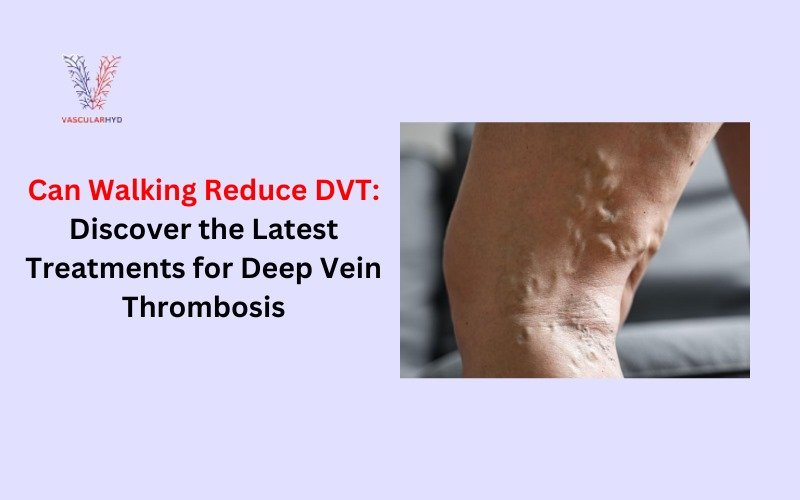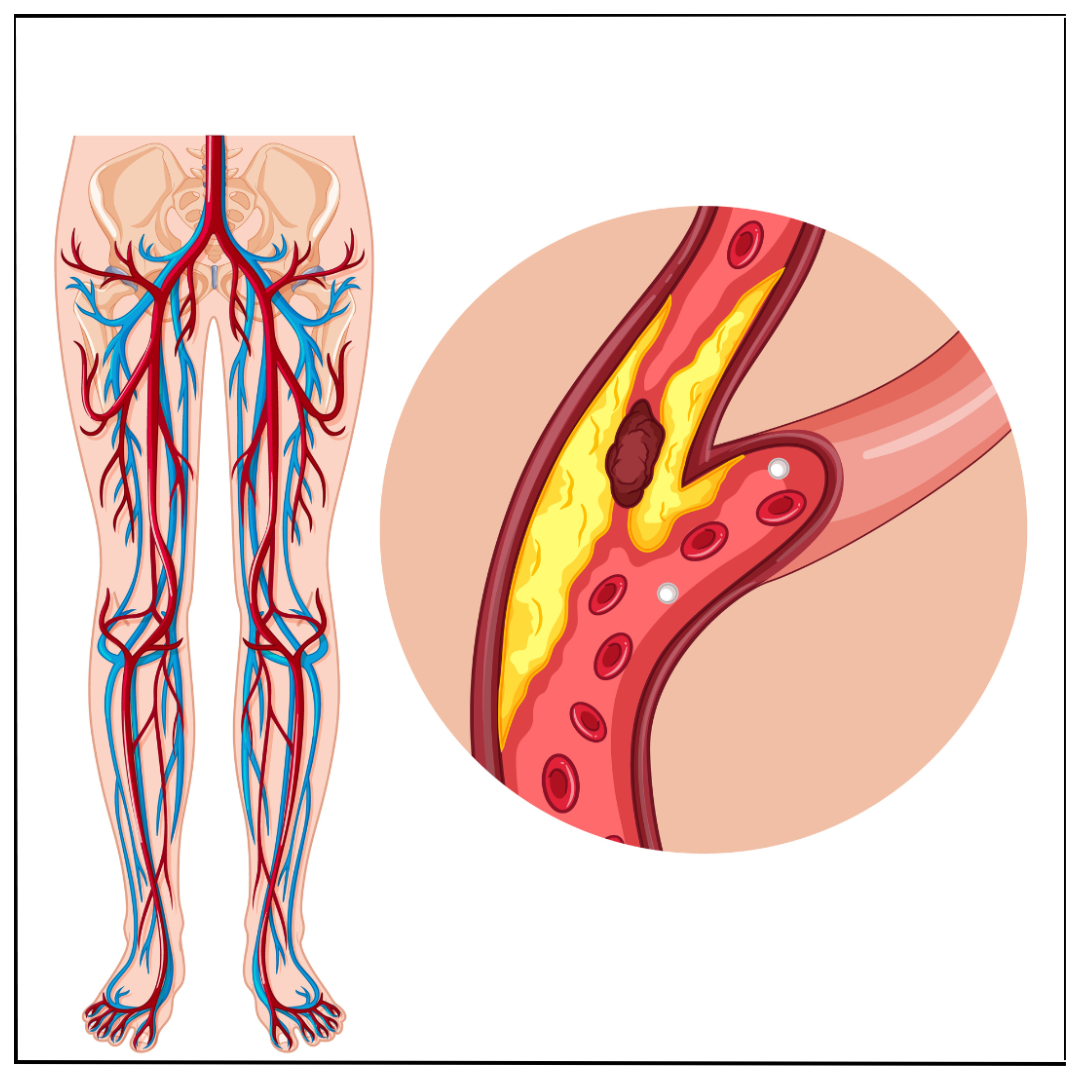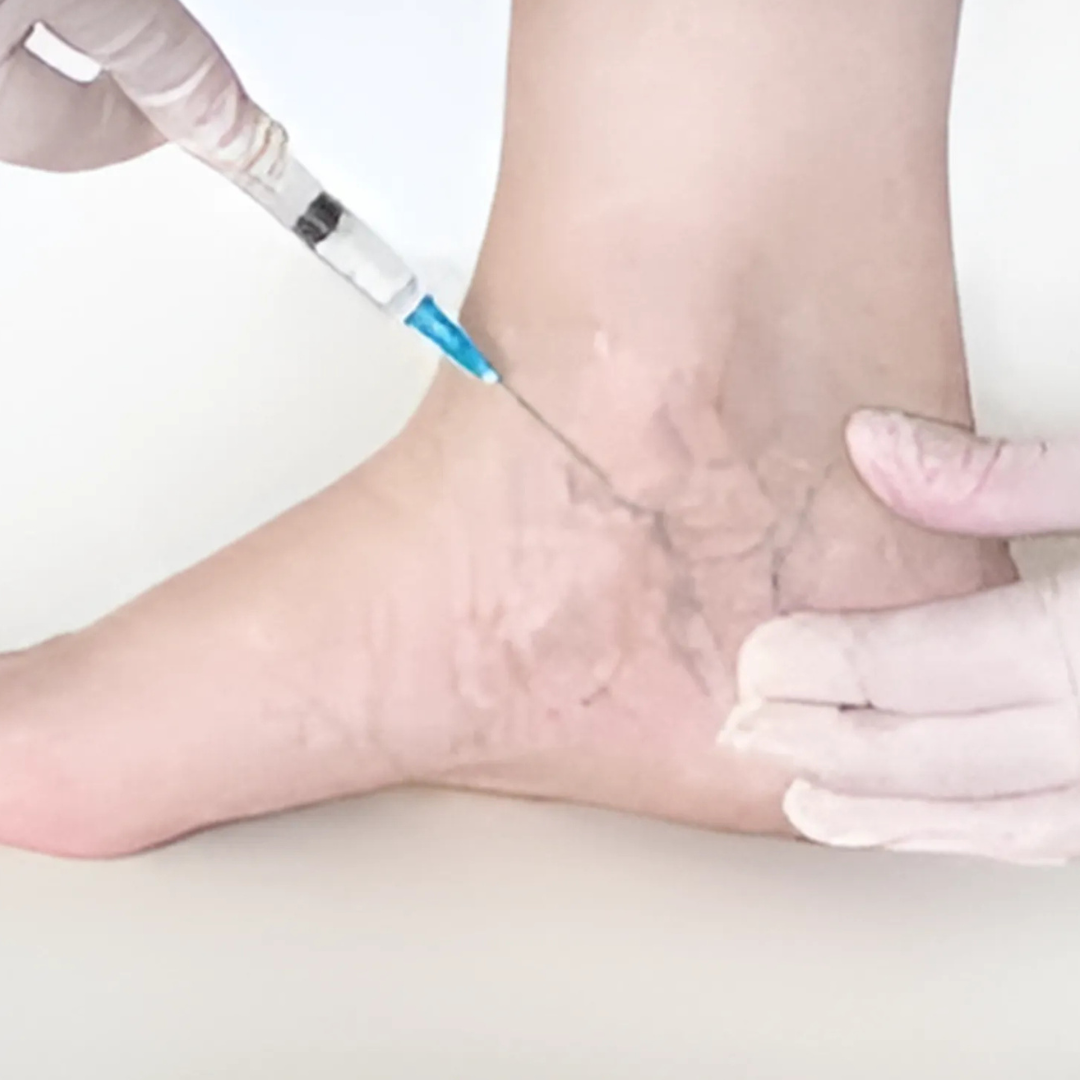Deep Vein Thrombosis (DVT) is a serious medical condition where blood clots form in deep veins, usually in the legs. This condition can lead to significant complications if not treated promptly, including pulmonary embolism, where a clot breaks free and travels to the lungs, which can be fatal. With rising awareness about DVT and Varicose Veins, many are exploring preventive measures and treatments. One common question that arises is whether walking can reduce the risk of DVT. This blog post delves into this query, examining the latest treatments for DVT, with a focus on DVT treatment in Hyderabad.
Understanding Deep Vein Thrombosis (DVT)
Deep Vein Thrombosis occurs when blood flow slows down or changes, causing blood cells to clump together and form a clot. Common risk factors include:
- Prolonged immobility (e.g., long flights or bed rest)
- Surgery or injury
- Certain medical conditions and medications
- Genetic predisposition
Symptoms of DVT can be subtle but may include swelling, pain, and redness in the affected limb.
Can Walking Reduce the Risk of DVT?
Walking and regular physical activity are often recommended to improve circulation and prevent the formation of blood clots. Here’s how walking can help:
- Improves Blood Flow: Walking stimulates blood flow in the legs, reducing the risk of clot formation.
- Muscle Activation: Engaging the calf muscles helps pump blood back to the heart.
- Reduces Venous Stasis: Regular movement prevents blood from pooling in the veins.
Anticoagulants, or blood thinners, are the primary treatment for DVT. They prevent existing clots from growing and new ones from forming. Common anticoagulants include:
- Heparin: Administered intravenously or via injection for immediate effect.
- Warfarin: An oral medication used for long-term treatment.
- Direct Oral Anticoagulants (DOACs): Newer medications such as rivaroxaban and apixaban offer more predictable responses without the need for regular blood monitoring.
These specially designed stockings apply pressure to the lower legs, helping maintain blood flow and reduce swelling. They are particularly useful for preventing post-thrombotic syndrome, a common complication of DVT.
In severe cases, thrombolytic drugs may be used to dissolve clots. These are administered directly into the bloodstream or through a catheter placed in the affected vein.
4. Inferior Vena Cava (IVC) Filters
For patients who cannot take anticoagulants, an IVC filter may be placed in the large vein (vena cava) to prevent clots from reaching the lungs. This is a temporary measure used in high-risk scenarios.
In rare cases, surgical removal of the clot (thrombectomy) may be necessary, especially if the clot is large or causing significant problems.
In addition to walking, several other preventive measures can reduce the risk of DVT:
- Stay Hydrated: Dehydration can thicken the blood, increasing the risk of clot formation.
- Maintain a Healthy Weight: Obesity is a significant risk factor for DVT.
- Avoid Prolonged Immobility: During long journeys, take breaks to walk and stretch.
- Wear Compression Stockings: Particularly useful for those at higher risk, such as post-surgery patients or frequent travelers.
Does Drinking Water Reduce DVT?
Staying hydrated by drinking water is often recommended as a simple yet effective measure to improve overall health. But can it specifically reduce the risk of Deep Vein Thrombosis (DVT)? Let's explore this topic in detail, backed by research and expert opinions.
Hydration plays a crucial role in maintaining proper blood circulation and preventing the formation of blood clots. Here are several ways in which drinking water can help reduce the risk of DVT:
- Maintaining Blood Viscosity: Proper hydration helps maintain the optimal viscosity of blood. Dehydration can lead to thicker blood, which increases the risk of clot formation.
- Supporting Venous Return: Adequate water intake ensures that blood volume is maintained, supporting the return of blood to the heart and reducing the likelihood of pooling in the veins.
- Preventing Dehydration-Related Complications: Dehydration can cause blood vessels to constrict, which may hinder blood flow and contribute to clot formation.
Practical Tips for Staying Hydrated
Here are some practical tips to ensure you stay adequately hydrated:
- Drink Regularly: Aim to drink at least 8 glasses of water a day. Adjust your intake based on your activity level, climate, and overall health.
- Monitor Urine Color: A pale yellow urine color typically indicates proper hydration, while darker urine may suggest the need for more fluids.
- Incorporate Hydrating Foods: Foods with high water content, such as fruits and vegetables, can contribute to your overall hydration.
- Limit Diuretics: Reduce the intake of diuretic beverages like coffee and alcohol, which can increase fluid loss.
Dr. Rahul Aggarwal, a leading vascular specialist, emphasizes the importance of lifestyle modifications alongside medical treatment. "While medical interventions are crucial, patients must also adopt healthy habits. Regular walking, a balanced diet, and staying hydrated are simple yet effective ways to prevent DVT."
Walking is a simple and effective way to reduce the risk of Deep Vein Thrombosis, but it should be part of a broader strategy that includes medical treatment and lifestyle changes. The latest treatments for DVT, available in Hyderabad and globally, offer hope and effective management of this potentially life-threatening condition. For those at risk or experiencing symptoms, consulting with a healthcare professional, such as Dr. Rahul Aggarwal, is essential for personalized care and treatment.






.png)

 (1).png)
